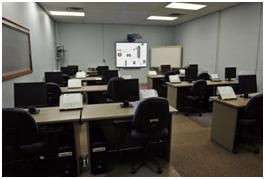
|

Posted on:
28 Jan 2013
|
Nowadays, process simulators are an essential tools for some of the courses being taught within the Chemical Engineering degree in most of the Universities and High Schools all over the world. A high percentage of the projects, especially those with a design approach, are normally conducted with the aid of a commercial or academic simulator. It is even becoming more and more common to find assignments in textbooks specifically prepared for a certain process simulation tool.
However, it seems like the “traditional” and “old-school” approach in some parts of the Chemical Engineering education is somehow unchangeable, when it comes to innovation and being updated by using computer-aided tools.
However, it seems like the “traditional” and “old-school” approach in some parts of the Chemical Engineering education is somehow unchangeable, when it comes to innovation and being updated by using computer-aided tools.

The professors Kevin D. Dahm, Robert P. Hesketh and Mariano J. Savelski at Rowan University (Glassboro, New Jersey) analyze how effective it is to include computing (particularly process simulation) in the chemical engineering curriculum in their paper “Is process simulation used effectively in ChE course?”.
Currently, some courses in chemical engineering, such as Process Dynamics and Control and Process Optimization, are computer intensive and can benefit from dynamic process simulators and other software packages.
One of the most interesting topics discussed in the paper is the real pedagogical value of these tools from different perspectives: student skills development, industry needs or future technology trends.
Perhaps the most remarkable advantages of integrating simulation tools into a course is that it enables the professor to present in an inductive manner, such that the lectures can become more intuitive and time-efficient.
However, some people, especially teachers, argue that a potential drawback of using simulators is that it is possible for students to successfully construct and use models without really understanding the physical phenomena within each unit operation. So therefore, those tools could be suitable as a pedagogical aid in lower-level course where a high understanding of the process is not required.
We fully agree with the idea of enhancing some courses by including tools that can provide an added-value to the learning process, but of course that should not mean enabling the students to solve problems with only a surface of understanding of the processes they are modelling.
In my years of teaching I have seen too many times that students just “click together” a flow sheet, fill in some parameters and press “solve”. When the program converges to a solution, the students eagerly agree with the solutions, without checking the validity of the answer (At one point in time a student confidently presented me his reactor design with a cross sectional area of 26 million square meters!… ”It was the outcome of the simulation, so it must be right”, was his defence to my serious doubts).
In my opinion there is quite a difference between simulation (by connection a set of models that were developed by someone else) and modelling (in which you think about the involved equations yourself). Students should at least have some knowledge about modelling, before they can use simulation tools efficiently.
We would be more than interested in your view on this, so please leave a comment below.
In the next blog we will cover another interesting point made by the professors from Rowan University.
———————————————–







If you are interested about my opinion, please get in touch with me. I have worked many years as a simulator instructor. regards, Erik Muller
Any software is just a tool to help the calculations. What matters is whether or not the results make sense. This has to be understood first. And most importantly, we have to have a feeling for that. Henk Leegwater said that you have to have a mental model inside you.
To my opinion, it is going to be very useful to have the students or anybody to experience the process equipments, to feel the nature, and then come back behind the desk to try to model and simulate them.
I very much agree with Mathieu’s observation, in particular where he stresses the point that in order to use a simulation, it is of paramount importance that there is sufficient familiarity with the underlying physics/chemistry.
I may add that there is a second prerequisite: apart from the physical contents of a model, implemented in a simulation, there is also the aspect of ‘modeling methodology’. Prior to the formalization of concepts into mathematical terms, there should be a deep understanding of the purpose of the model-under-construction, the distinction between the various roles quantities in the model will play (are they subject to designer’s choice, are they to be treated as constants from the context, are they figures of merit determining the feasibility of the modelled artefact, are they constraints …). Oversights in this stage of the modeling process may lead to a simulation that, although perhaps physically plausible, has little to do with the initial intentions of the designer or his stakeholders.
Kees van Overveld.
That’s very true indeed, Kees. If you are able to clearly state the goal of your modelling effort, you have already solved your problem 50%!
Especially in academic environments people sometimes seem to forget that modelling is a tool and not a goal in itself…
I also concur with Mathieu’s opinions. I am a student myself and I get an excellent grasp of a modelling or simulation task when I fully understand the physical/chemical phenomena behind it.
On the other hand, there is a need for teachers to teach students in such as way that they are able to have a sense or an understanding of the “real-life” implications of the results obtained from a simulation/modelling task. There must be continuous emphasis on the fact that modelling/simulation is a tool & not a goal in itself like Mathieu rightly mentioned.
Instructors should also teach students at least a surface level understanding of solution techniques used by the modelling/simulation tool used in teaching and also make the aware of the strengths and limitations of these solution techniques. This will give the students an understanding of the possible reasons behind the non-convergence of a a process simulation/modelling tool or the output of wrong answers.
I conclude by saying that a model for teaching process simulation and modelling should be followed where the students are first grounded in the basic principles of chemical processes (for example the use of McCabe & Thiele graphical approach in distillation design)by using both “white/chalkboard”, laboratory experiments & videos. Afterwards, the students should be taught about the modelling of these processes before they can start using process simulation tools.
Key is to make sure students understand that modelling is something completely different from simulation. Also their goals, and from that it becomes evident what to do when.
In my background with Six Sigma a different kind of simulation is often useful in industrial settings. Building a model from carefully Designed Experiments.